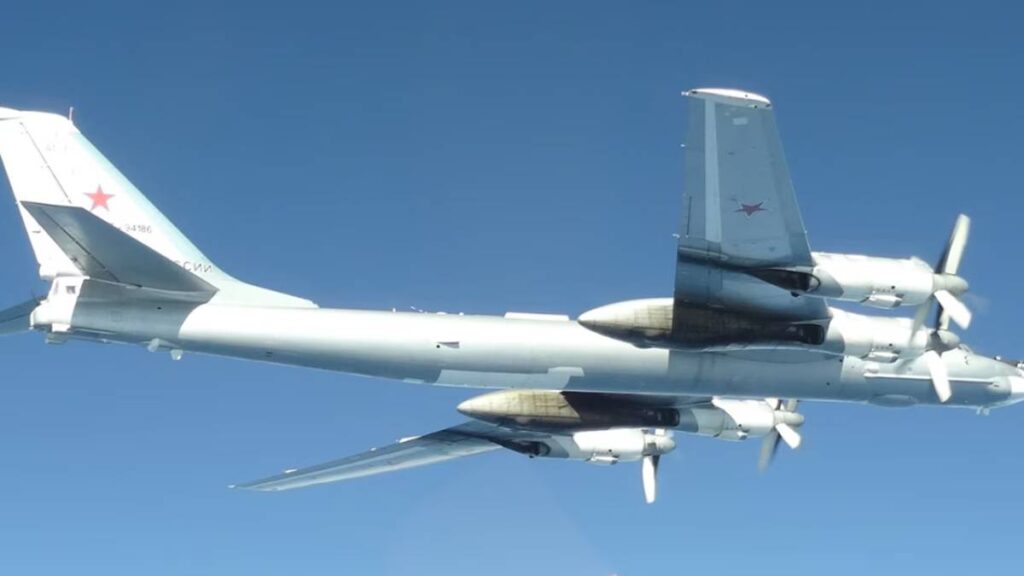
On February 8, 2024, the North American Aerospace Defense Command (NORAD) reported the detection of four Russian aircraft operating within the Alaska Air Defense Identification Zone (ADIZ). This has raised concerns over potential breaches of international airspace protocols. It has also caused geopolitical tension between Russia and the United States.
But, in a reassuring update, NORAD confirmed that the Russian aircraft detected did not breach American or Canadian sovereign airspace. “The Russian aircraft remained in international airspace and did not enter American or Canadian sovereign airspace. This Russian activity in the Alaska ADIZ occurs regularly and is not seen as a threat,” the report stated.
NORAD revealed several instances of Russian aircraft entering the Alaska defense zone. These incidents occurred on July 3, May 15, May 11, and April 17, 2023. For the May 11 and April 17 incidents, NORAD had to conduct “routine intercepts.” This involved deploying fighter jets to escort the Russian aircraft from the defense zone.
As NORAD stated, “Since Russia resumed out-of-area Long Range Aviation activity in 2007, NORAD has seen a yearly average of approximately six to seven intercepts of Russian military aircraft in the ADIZ. These numbers have varied yearly from as high as 15 to as low as zero.”
ALSO READ: U.S. Retracts Claims It Notified Iraq About Retaliatory Airstrikes
The Alaska ADIZ extends 150 miles from the U.S. territorial boundaries and protects against unauthorized entries. Any aircraft coming into the Zone is required to identify itself, making it easy to detect intrusions. Any unauthorized entries are closely monitored and investigated to ensure the safety and sovereignty of US airspace.
NORAD tracks aircraft intrusions in the Alaska ADIZ through “layered defense networks of satellites, ground-based and airborne radars, and fighter aircraft.” This system ensures constant surveillance in the Zone; that way, NORAD is “ready to employ several response options in defense of North America.”
POLL — Is Climate Change a Major Threat That Requires Immediate Policy Action?
The Russian aircraft were identified as two Tupolev Tu-95 strategic bombers and two Sukhoi Su-35S long-range fighter jets. The aircraft maintained their presence within international airspace throughout their flight.
According to the Russian Ministry of Defense, long-range aircraft are the air component of the Russian nuclear triad. However, they can also carry out strikes with conventional missiles and bombs, including cruise missiles.
ALSO READ: John Kirby Apologizes for Biden Admin Lying about Warning the Iraqi Government Ahead of Airstrike
Amidst the tensions and airspace violations, Russia’s defense ministry issued a press release. The statement explained the reason why the military aircraft was detected. It detailed a long-range training flight by bombers to the Arctic.
The press release described the deployment of two Tu-160 strategic missile carriers, which conducted a flight over the neutral waters of the Arctic Ocean and the Laptev Sea, lasting over 10 hours.
“The flight was carried out in strict accordance with international rules for the use of airspace,” said the commander of long-range aviation, Lieutenant General Sergei Kobylash. “Long-range aviation pilots regularly fly over the neutral waters of the Arctic, North Atlantic, Black and Baltic Seas, and the Pacific Ocean.”
The nature of their mission or intentions remains unclear. However, U.S. officials and observers are still concerned about the implications of these intrusions.
You Might Also Like:
Trump Defamation Case Judge Orders Jurors Not to Disclose They Were On the Jury
Elaine Schock Speaks About Toby Keith, Claims People “Misunderstood” the Late Country Singer
Beautiful Pictures of Native Americans in Traditional Masks and Dresses
Family Uncovers Mysterious Bottomless Pit in Driveway
South Carolina Senator Responds to Trump Considering Him for Vice President
